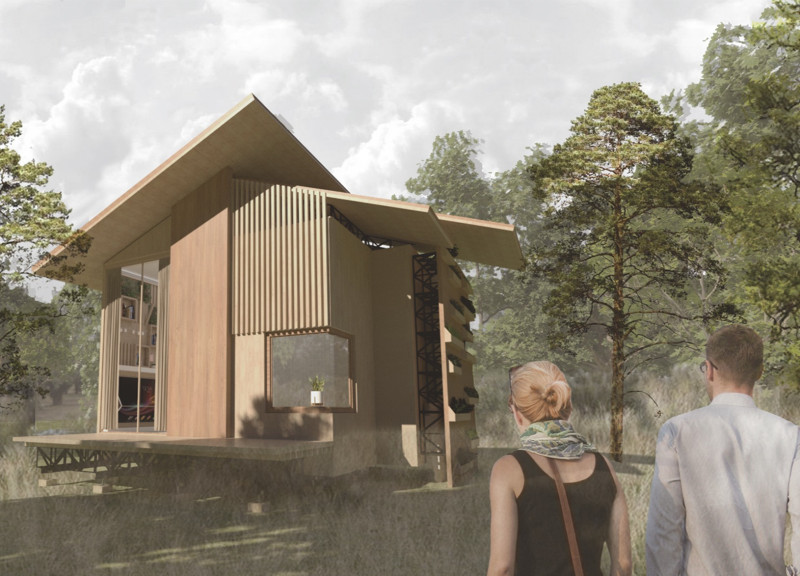5 key facts about this project
The microhome project of 2021 focuses on creating a sustainable and adaptable living space suitable for urban environments. Designed to meet the evolving needs of residents, the structure promotes efficient use of space and encourages social interaction. It responds to modern challenges, especially those highlighted during the pandemic, aiming to enhance daily living experience.
Design Concept
At the center of the microhome's design is the use of renewable energy sources. Photovoltaic solar panels are incorporated as a primary feature, highlighting a commitment to energy efficiency. This element is crucial in providing renewable power for daily needs. Additionally, a vertical solar protection system is included to limit excess sunlight, which helps in maintaining a comfortable indoor climate.
Structural Framework
The structure employs a modular approach supported by wood trusses. The primary and secondary trusses provide stability while using natural materials. This choice enhances the overall look of the space, making it feel warm and inviting. A sliding door with an integrated table maximizes functionality, allowing the space to adapt to various activities like dining and working.
Insulation and Storage Solutions
Proper insulation is essential for maintaining a comfortable environment. The project uses a layered insulation system that includes plywood, glass wool, and a polyethylene barrier. This combination helps manage heat loss and control moisture. Innovative storage solutions are also part of the design. Custom furniture and movable elements are included to ensure that every inch of space serves a purpose, which is crucial in a micro-living setting.
Water Collection System
The microhome features a rainwater collection system. This system captures and stores rainwater for reuse, promoting eco-friendly practices. It reflects a broader approach to sustainability, acknowledging the importance of water management in daily life.
Connecting decks are a notable design element that enhances community interaction. These decks encourage residents to engage with one another, making the microhome a functional space for both private living and social connection.



















































